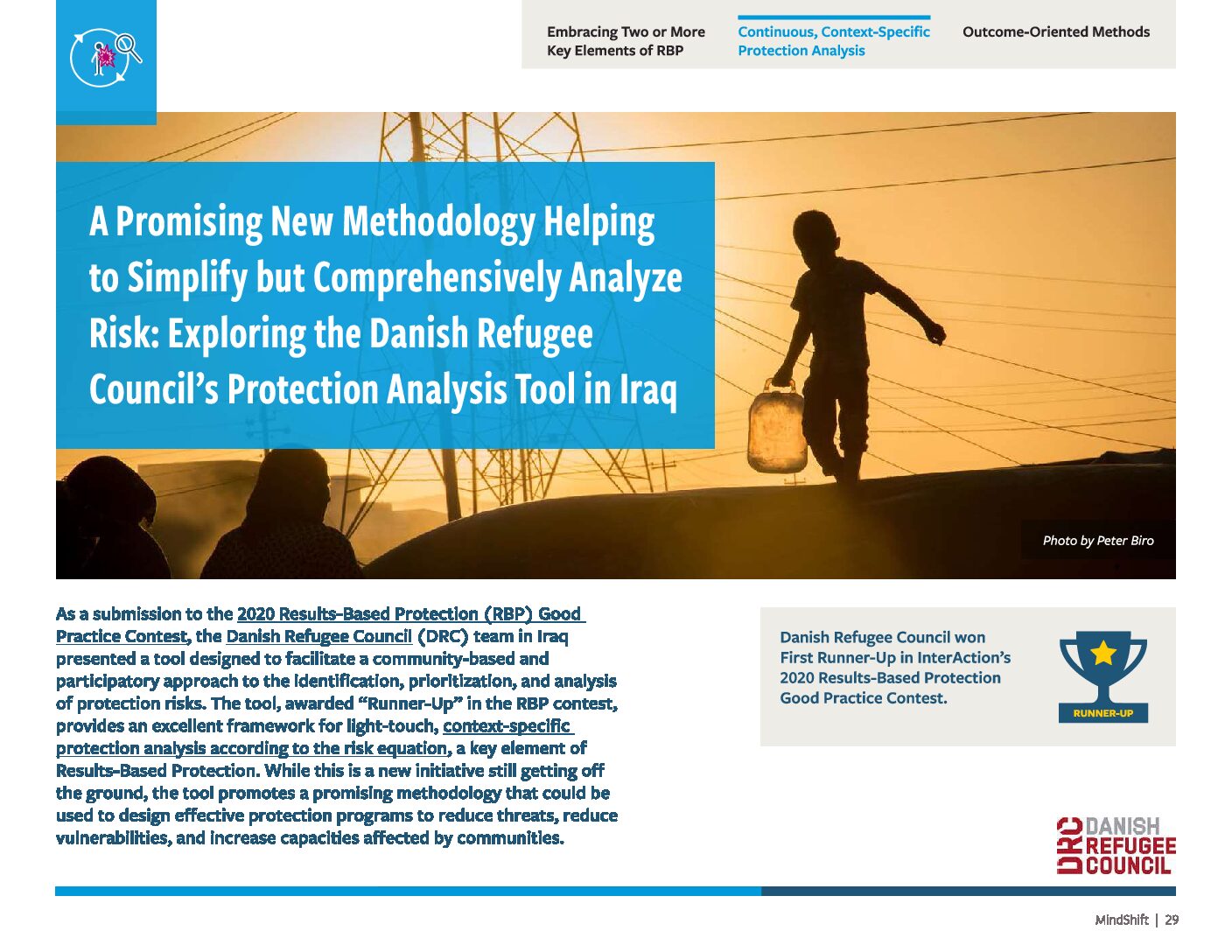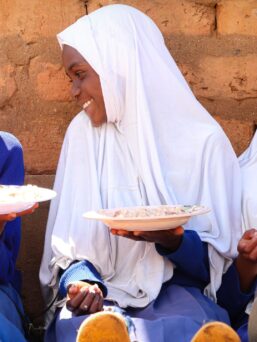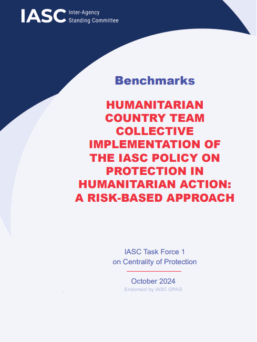As a submission to the 2020 Results-Based Protection (RBP) Good Practice Contest, Elena Bartoloni from the Danish Refugee Council (DRC) team in Iraq presented a tool that is designed to facilitate a community-based and participatory approach to the identification, prioritization, and analysis of protection risks. The tool, awarded “Runner-Up” in the RBP contest, provides an excellent framework for light-touch context-specific protection analysis according to the risk equation, a key element of Results-Based Protection (RBP).
The most qualitative data collection I’ve ever seen in the protection sector.
DRC Protection Manager, Telafar
To understand how this tool came about, we need to take a little historical journey.
Prior to joining DRC, Elena Bartoloni worked as a Protection Consultant in the Disputed Border areas of Iraq. She noticed that Focus Group Discussions (FGDs) with communities experiencing protection risks were approached more as group interviews based on a structured pre-set of questions. This approach often reduced FGDs to a – , which did not encourage active and meaningful participation by the participants, nor in-depth and context specific discussion and analysis of the protection issues and coping strategies described by the participants. The approaches used also lacked a framework for analysis of the information gathered. This hindered the capacity of protection actors to adequately identify ways to minimize protection risks and to effectively assist vulnerable populations. Inspired by these observations, she began drafting a tool for exploring the breadth of protection risks affecting a community, how to prioritize those most important to them, and ways to break those risks down to better understand the component parts of risk (threat, vulnerability, capacity) by using the risk equation. All of this information needed to then feed into a light-touch protection analysis that could inform programming.
While working in various protection roles, Elena brought in new learning and iterated to improve the tool. As it stands now, the tool promotes a set of questions and a systematization tool to prompt a participatory and results-based approach to community discussions and protection analysis.
Although continually being updated based on new learning, the tool was picked up and piloted by the DRC Iraq protection team and is now being integrated within their approach to protection monitoring as a qualitative data collection tool. Additionally, the DRC Monitoring, Evaluation, Accountability and Learning (MEAL) team is exploring the application of qualitative data analysis software to support effective analysis on a broader scale. The demographic information and tag words will be used to bolster protection analysis, specifically to support trends analysis.



